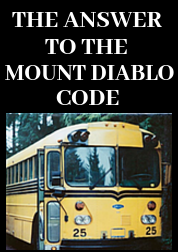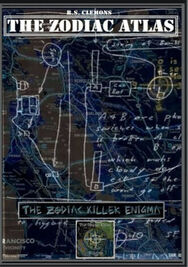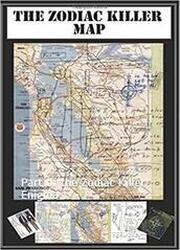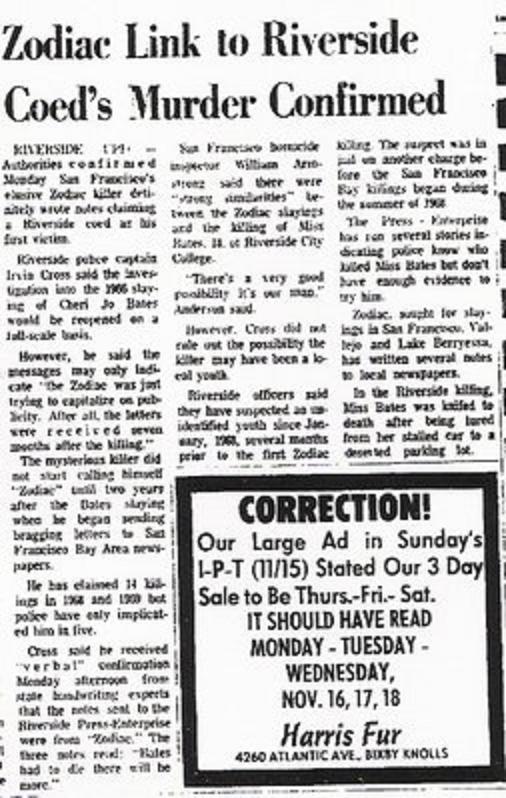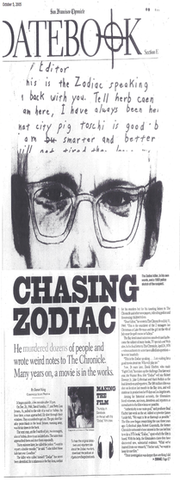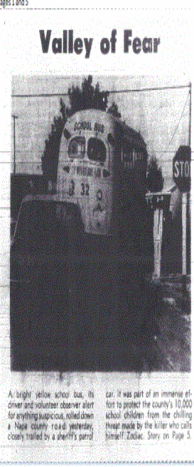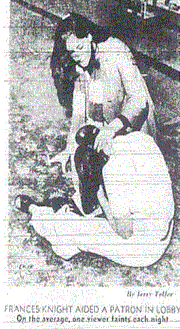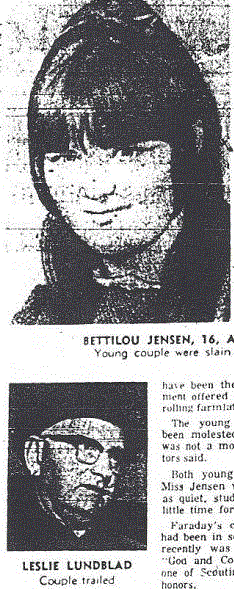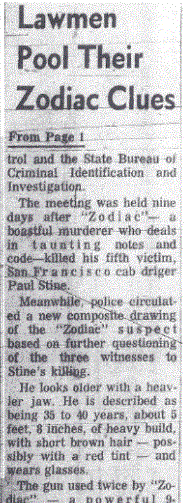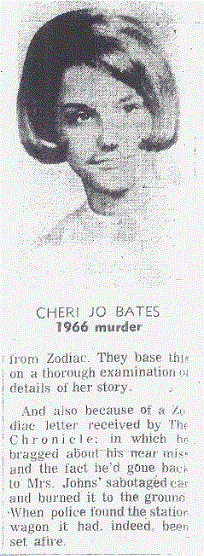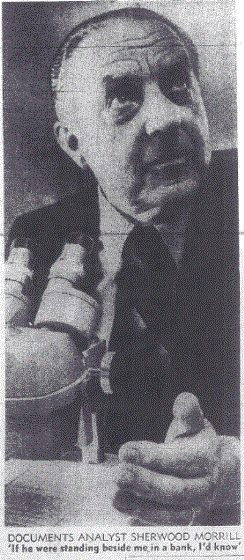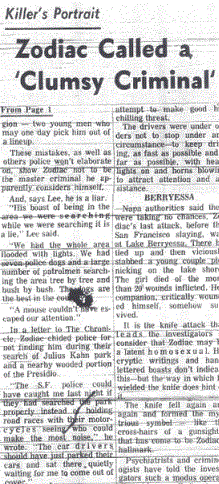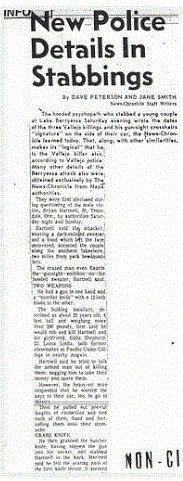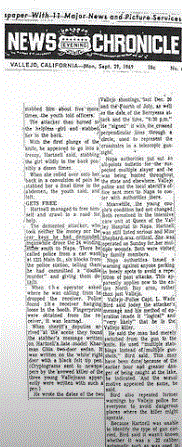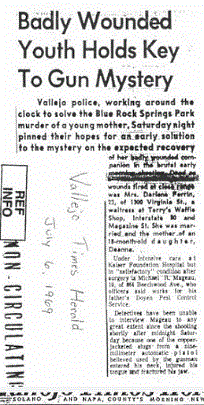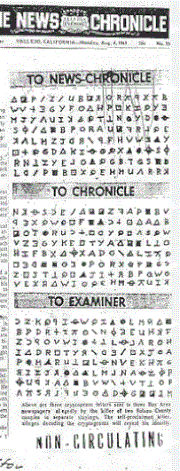This was detailed in a previous post The Silent Murder at Presidio Heights, which examined the Zodiac Killer's possible movements after departing the crime scene and heading north along Cherry Street. But here we shall remain at the corner of Washington and Cherry Streets for a while longer and ask what did the eyewitnesses actually see? How accurate is their recollection of the events on that fateful night, bearing in mind this is not an attempt to discredit their testimony and observations, which were given in good faith at the time. Eyewitness testimony has become - particularly in recent years - a highly contentious subject, and it has been shown on countless occasions to be flawed, not only in the way photographs are displayed to the witness or victim and the methodology of police line ups, but also placing such high emphasis on a positive identification in the subsequent trial of any defendant. The premise of 'beyond a reasonable doubt' has seemingly been ignored by many courtrooms, who appear to have traveled down the dangerous route, under a new banner of 'If the witness or victim sounds convincing enough, then we will convict'. This happens time over, despite the fact there is zero supporting evidence to accompany the case.
| There are many examples of people being sentenced to life terms, simply on the say so of somebody else, with some examples of this provided at the foot of this article. One of the biggest problems with eyewitness recollection, is the natural ability of the human brain to fill in the gaps of an incomplete story. Over time - and we could be talking hours, days, weeks or even years - the human mind will attempt to reconcile the empty spaces in our memories and complete the story, drawing from that individuals experiences. The actual events that occurred, in many instances, are far removed from our memory of them. |
| Paul Stine was murdered late at night, just shy of 10:00 pm. There were many streetlights in the area of the Washington and Cherry intersection, including one close to the teenagers residency, but crucially there wasn't one overlooking the scene of the crime. There are many conflicting opinions on the visibility that night, so let us just say it was not ideal. Furthermore, October 11th 1969 was a new moon, so from the perspective of the night sky it could not have been darker. If we believe this was a crime conceived days in advance, is it possible the Zodiac Killer used the moon phases over San Francisco as a consideration when formulating his escape plan? |
The upshot is, that despite the honesty and integrity of any witness, the likelihood of the composite drawings of the Zodiac Killer compiled from across the street, being an extremely close likeness to the killer, is probably questionable at best. The police sketches were likely to have been of little value in searching for the killer, with a suspect never being eliminated based upon it. There is also a problem regarding the two sketches of October 13th 1969 and October 18th1969, the latter of which shows a slightly older version of the killer. This raises the obvious questions of what was said or shown to the eyewitnesses during this intervening period, that may have changed their interpretation of the killer's facial characteristics? How much did 'reconstructive memory' play a part in the intervening five days, before the revised version was issued? In addition, there is also the problem of artificial lighting, shadows and distance, that all contribute towards the perception of face shape, face size, hair color and height in this case. When the human eye experiences darker conditions, the depth of field is greatly reduced as the pupils of our eye become dilated.
| Interview techniques also have come under scrutiny. If you select a group of people to watch a video of a reconstructed or make believe crime, then separate them and ask them the same question in a slightly different manner, you get conflicting results. One set of individuals may be asked the question 'how tall was the killer', which would illicit higher results than 'what height was the killer'. Another example may be 'was the car going fast' or 'was the car going slow'. In other words, a neutral approach is required for the most accurate results, as opposed to the leading questions used commonly in many investigative practices. Scott Fraser sums it up perfectly when he states 'just how accurate are the memories that we know are true, that we believe in'. It certainly raises many questions in the study of human recollection and memory, not only in the Paul Stine case, but evidence pieced together in the Lake Herman Road double murder and the Blue Rock Springs and Lake Berryessa attacks from the surviving victims, eyewitnesses and investigators alike. This leaves us with one question - are the memories they have the true ones, or are they memories they believe to be true. |
Also 'Never forget a face' and 'Elizabeth Loftus:The fiction of memory'.
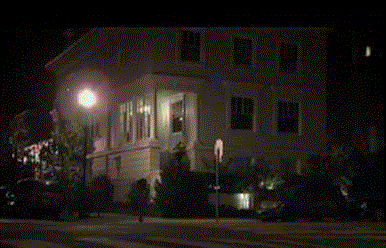






 RSS Feed
RSS Feed

